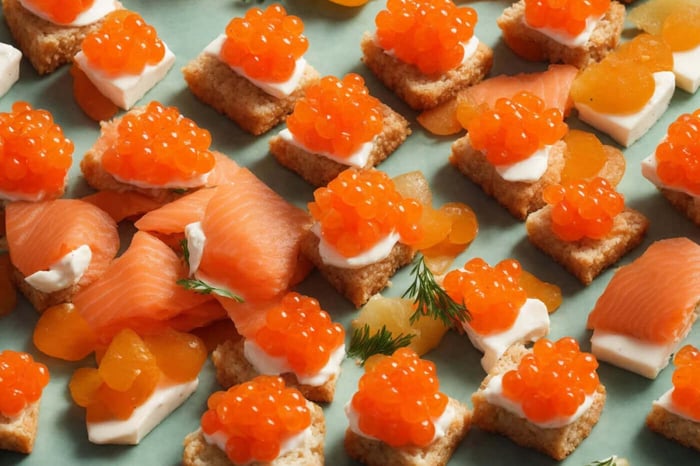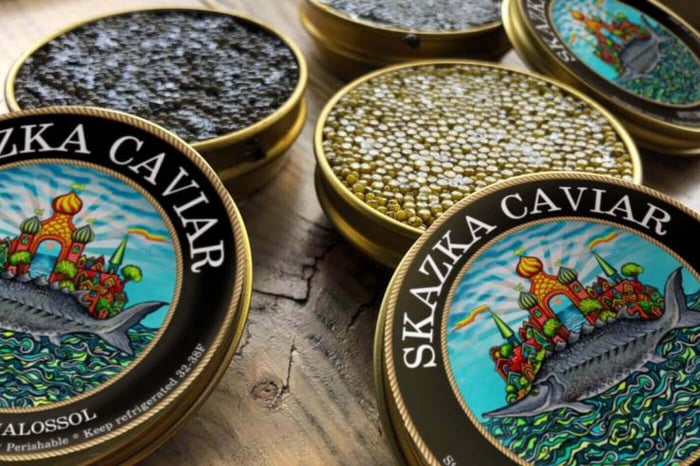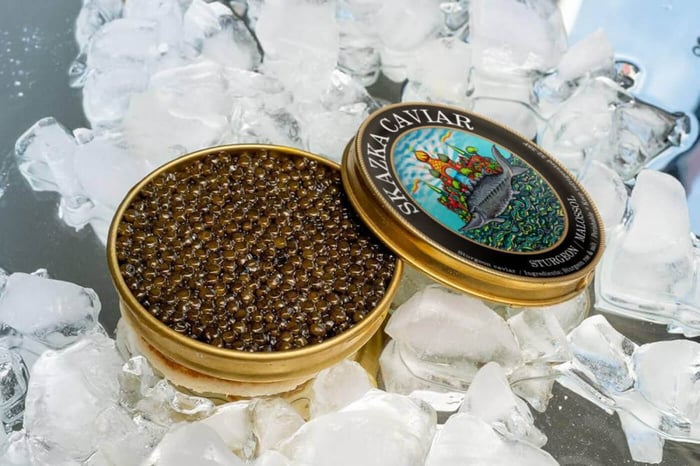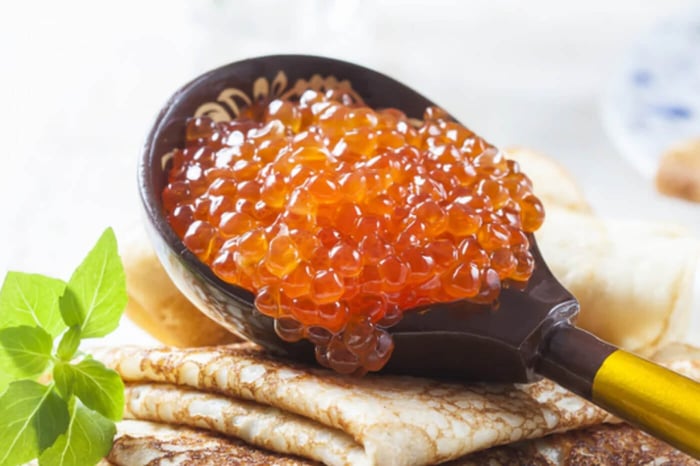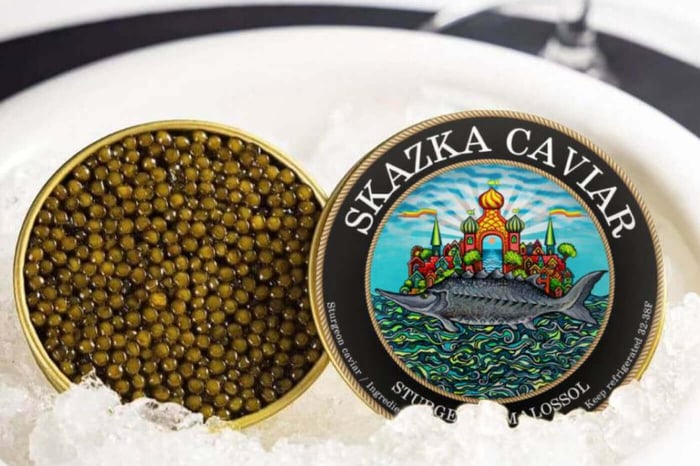 Caviar, the luxurious delicacy made from sturgeon roe, has long been a symbol of opulence and fine dining. Traditionally harvested from wild sturgeon in the Caspian and Black Seas, caviar has faced increasing pressure due to overfishing, leading to the rise of farmed alternatives. Today, caviar lovers often debate: is wild or farmed caviar the better choice? In this article, we’ll explore the differences between these two types, examining their taste, sustainability, nutrition, cost, ethical considerations, and overall quality to help you make an informed decision.
Caviar, the luxurious delicacy made from sturgeon roe, has long been a symbol of opulence and fine dining. Traditionally harvested from wild sturgeon in the Caspian and Black Seas, caviar has faced increasing pressure due to overfishing, leading to the rise of farmed alternatives. Today, caviar lovers often debate: is wild or farmed caviar the better choice? In this article, we’ll explore the differences between these two types, examining their taste, sustainability, nutrition, cost, ethical considerations, and overall quality to help you make an informed decision.
Taste and Texture Differences
One of the most significant factors when comparing wild and farmed caviar is taste. Wild caviar is often considered superior due to its complex, buttery, and refined flavor profile, which develops naturally over time in the sturgeon’s natural habitat. The texture tends to be firmer, with a satisfying pop when eaten. Farmed caviar, while still delicious, sometimes has a slightly milder or earthier taste due to differences in diet and controlled environments. However, advancements in aquaculture have allowed farmed caviar to closely replicate the depth of flavor and texture of wild caviar, making it a strong contender for gourmet dining.
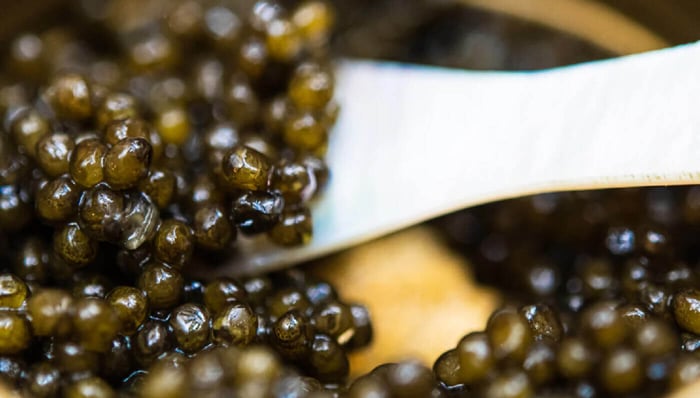
Read: Understanding Malossol: The Secret to Premium Caviar
Sustainability and Environmental Impact
Sustainability is a crucial consideration in the wild vs. farmed caviar debate. Due to overfishing, pollution, and habitat destruction, wild sturgeon populations have drastically declined, leading to strict fishing regulations and even bans in some regions. Farmed caviar, on the other hand, offers a sustainable alternative by breeding sturgeon in controlled environments, reducing pressure on wild populations. While aquaculture does have environmental concerns, such as water usage and waste management, modern fish farms employ sustainable practices like recirculating aquaculture systems (RAS) and organic feeds to minimize their ecological footprint.
Nutritional Differences
Both wild and farmed caviar are packed with essential nutrients, including omega-3 fatty acids, vitamins A, D, and B12, and high-quality proteins. Wild caviar often contains a slightly higher concentration of omega-3s due to the natural diet of sturgeon in the wild, which includes a variety of fish and crustaceans. Farmed caviar, however, is still highly nutritious, with many farms optimizing their feeding practices to enhance the nutritional profile of their caviar. Regardless of the source, both types of caviar offer significant health benefits, including improved brain function, heart health, and immune support.
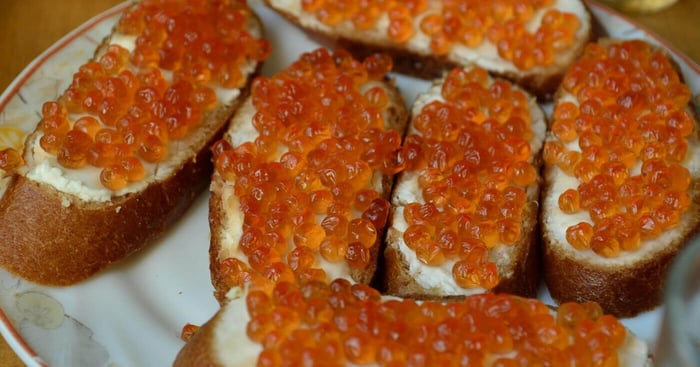
Read: Caviar Preservation Techniques: Ancient Practices vs. Modern Methods
Cost and Availability
Price is another key factor when comparing wild and farmed caviar. Due to its rarity and the stringent regulations surrounding its harvest, wild caviar is significantly more expensive and often harder to find. Farmed caviar, however, is more readily available and generally more affordable, making it accessible to a wider range of consumers. While high-end farmed caviar can still be costly, its consistent supply helps stabilize prices and ensure caviar remains a viable luxury for connoisseurs. Additionally, as farming techniques continue to improve, the quality of farmed caviar is approaching that of its wild counterpart, making it a cost-effective yet gourmet option.
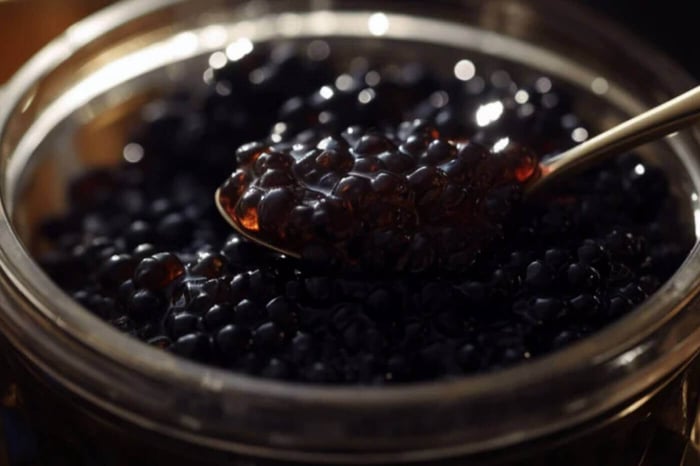
Ethical Considerations
Ethical concerns play a major role in the choice between wild and farmed caviar. Wild caviar harvesting has historically involved harmful practices that have led to the decline of sturgeon populations. Poaching and illegal trade further threaten wild sturgeon, making ethical sourcing a challenge. Farmed caviar, however, is often considered a more ethical choice, as sturgeons are raised in controlled environments where they are protected from overfishing and habitat destruction. Some farms even use humane “no-kill” extraction methods, allowing sturgeons to continue producing roe throughout their lifetime without being harvested for their eggs.
Overall Quality and Consumer Preference
When it comes to overall quality, both wild and farmed caviar have their advantages. Purists often prefer wild caviar for its superior taste, texture, and natural origins, viewing it as the pinnacle of gourmet indulgence. However, farmed caviar has made tremendous strides in recent years, with some high-end farms producing caviar that rivals or even surpasses wild varieties. Consumer preference ultimately depends on personal taste, budget, and ethical considerations. With sustainable practices and improved farming techniques, farmed caviar is quickly becoming a preferred choice for many chefs, food lovers, and environmentally conscious consumers.
Conclusion
The debate between wild and farmed caviar comes down to personal preference, ethical concerns, and sustainability. While wild caviar remains the gold standard in terms of traditional taste and texture, its limited availability and environmental impact make it a less sustainable choice. Farmed caviar, on the other hand, offers a high-quality, ethical, and more accessible alternative that continues to improve with advancements in aquaculture. Whether you prefer the prestige of wild caviar or the sustainability of farmed options, both types offer a luxurious and nutrient-rich delicacy that can be enjoyed in a variety of ways. Ultimately, the best caviar is the one that aligns with your values, taste, and budget.
About the Author
 Igor Fishbeyn - Caviar Purveyor
Igor Fishbeyn - Caviar Purveyor
Igor Fishbeyn is purveyor of fine sturgeon caviar and creator of the Skazka Caviar brand. He is an expert with decades of experience specializing in importing, wholesaling, and retailing the finest quality caviar in the world. Igor frequently writes about caviar news and various topics about the caviar industry. He lives in San Francisco with his wife and daughter.
Shop Skazka Caviar
Browse Our Exclusive Caviar Collection
“River Beluga” Kaluga Sturgeon Caviar
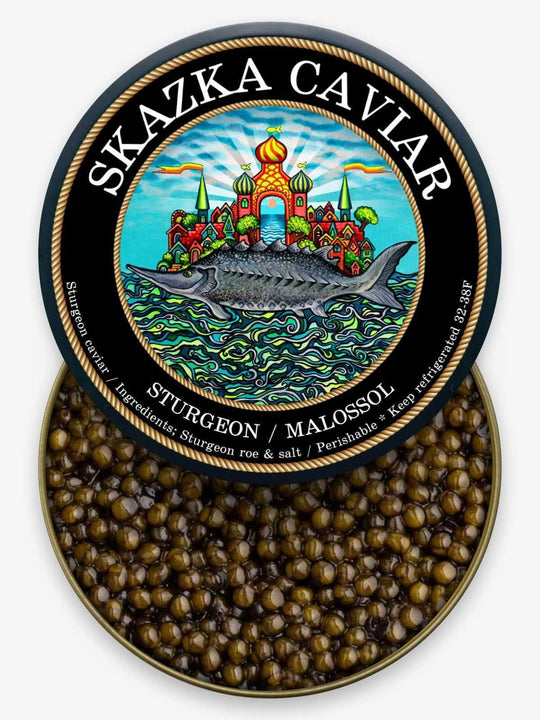
$295
$395
This large, robust caviar is a favorite of connoisseurs. Its firmness provides a satisfying texture that will keep you coming back for seconds and even thirds. Its luxurious chocolate brown color is perfectly evocative of its rich taste. Hints of… read more
“Oprah’s Favorite” Russian Osetra Caviar
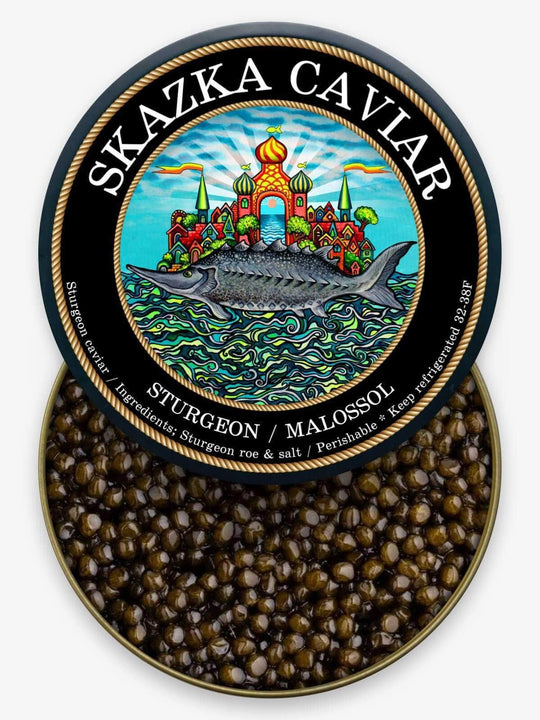
$295
$335
This medium-sized caviar is sure to be the star of any party or function you may throw. Its deep chocolate brown color is indicative of its rich and buttery flavor. Amber Osetra caviar has one of the cleanest tastes of any… read more
"Russian Czar" Beluga Sturgeon Caviar
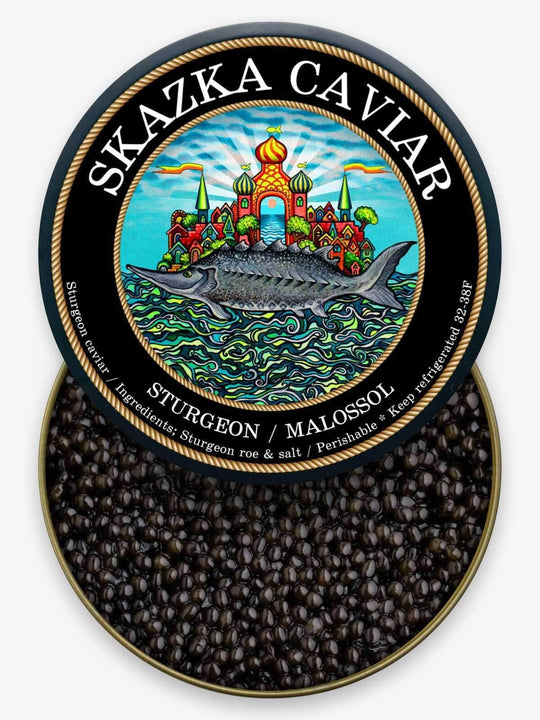
$495
$599
With an incomparable richness, “Russian Czar” Beluga Sturgeon Caviar is a knockout when it comes to fine caviar. Traditionally harvested in Russia, this caviar holds a tradition of greatness throughout history. With buttery notes that linger on the taste buds,… read more
“Tsar Reserve” Golden Osetra Caviar
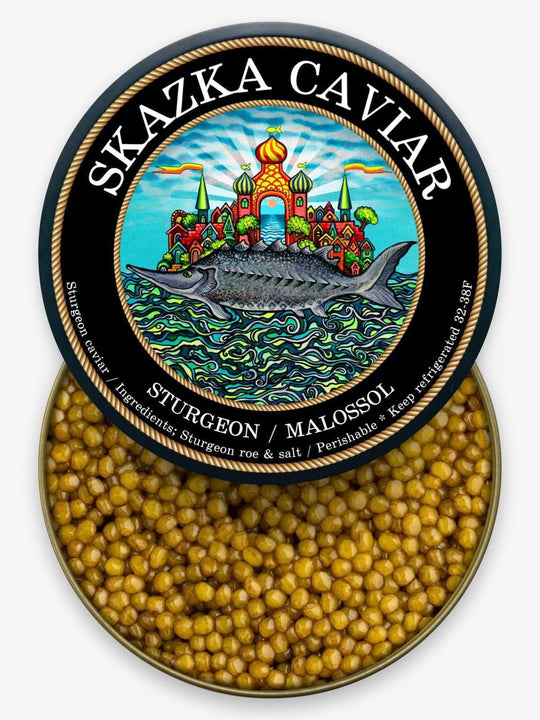
$395
Anyone with a taste for fine caviar will love “Royal Reserve” Golden Osetra Caviar. Its beautiful deep amber color is the first sign you’ll have that you’re in for something special, and once it hits your tongue you’ll know just… read more
Shop Caviar By Type
Shop Black Caviar | Shop Red Caviar | Shop Caviar Accessories
Shop Beluga Caviar | Shop Kaluga Caviar | Shop White Sturgeon Caviar
Shop Osetra Caviar | Shop Salmon Roe | Shop Albino Sturgeon Caviar

